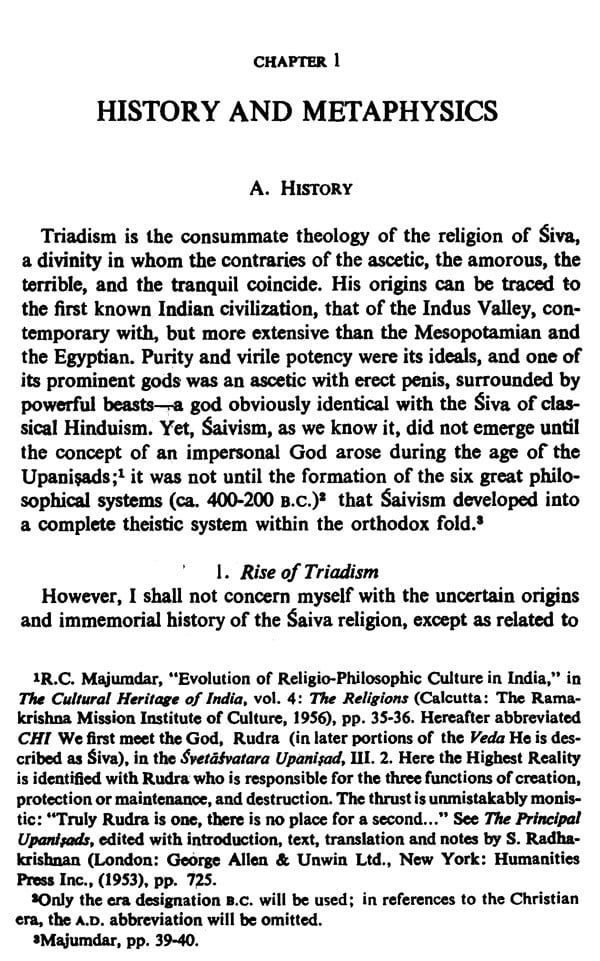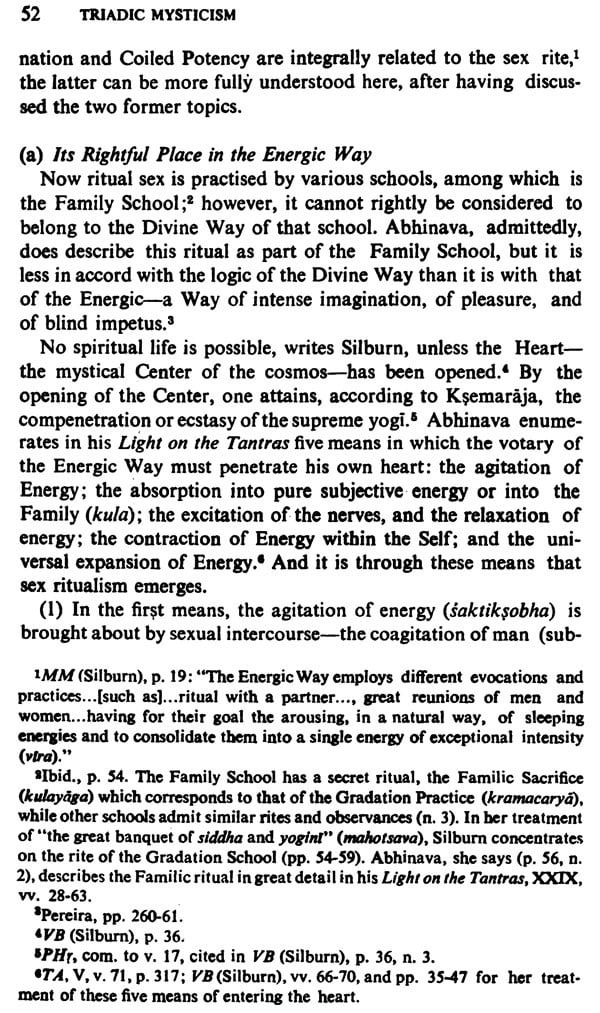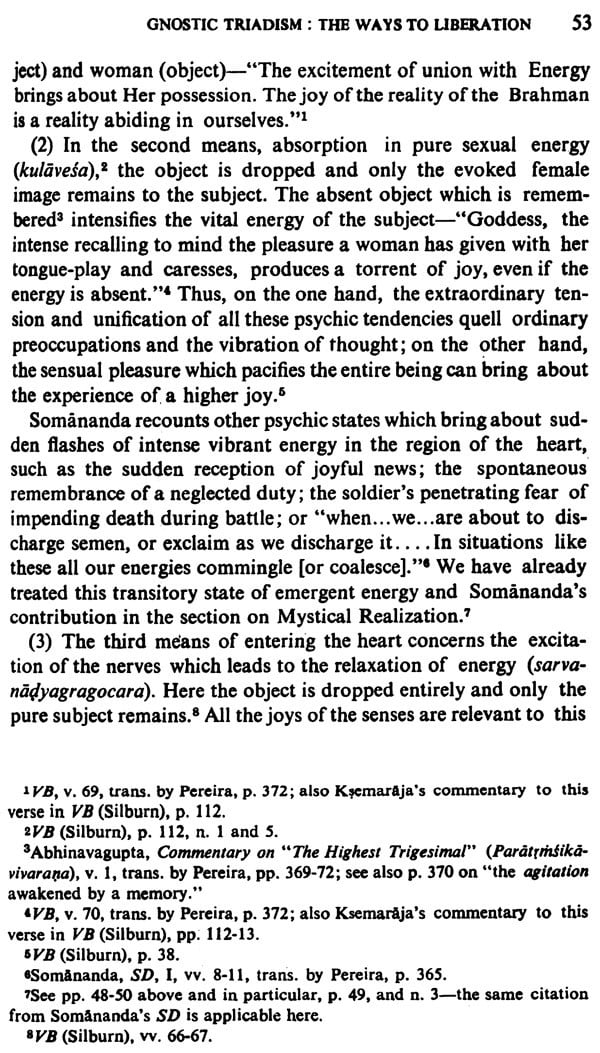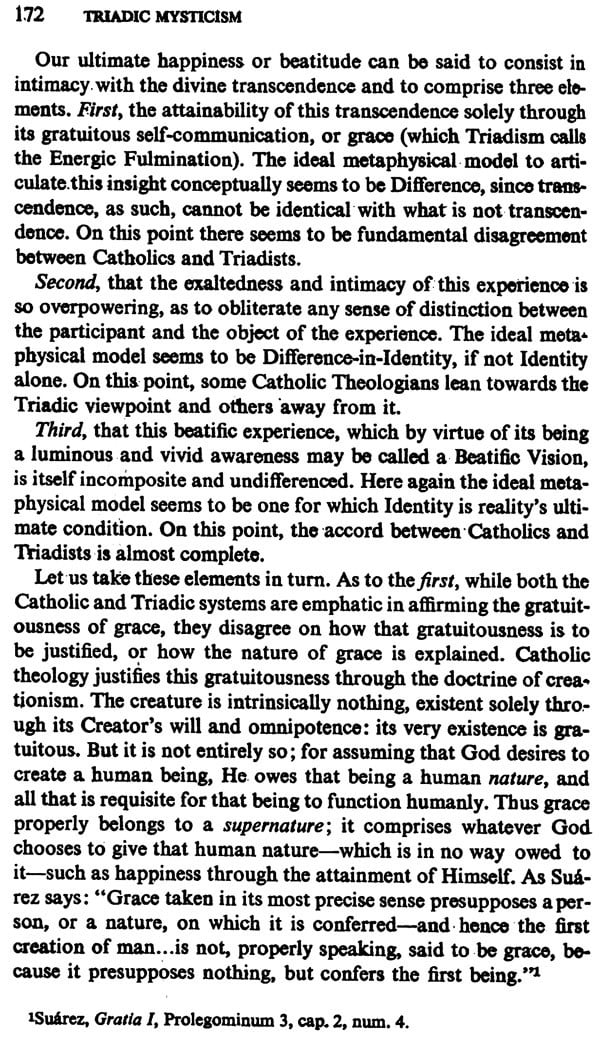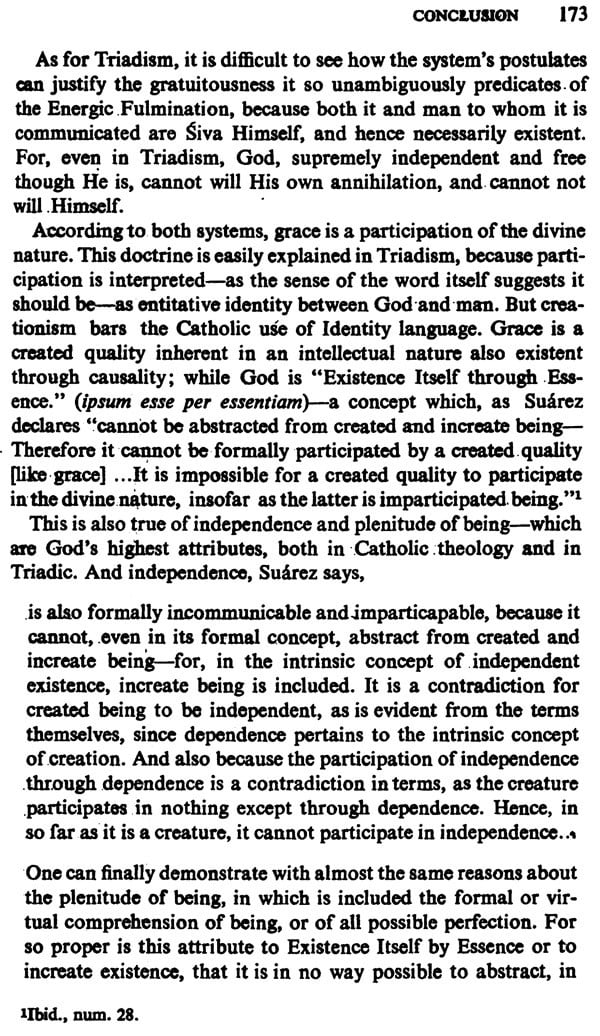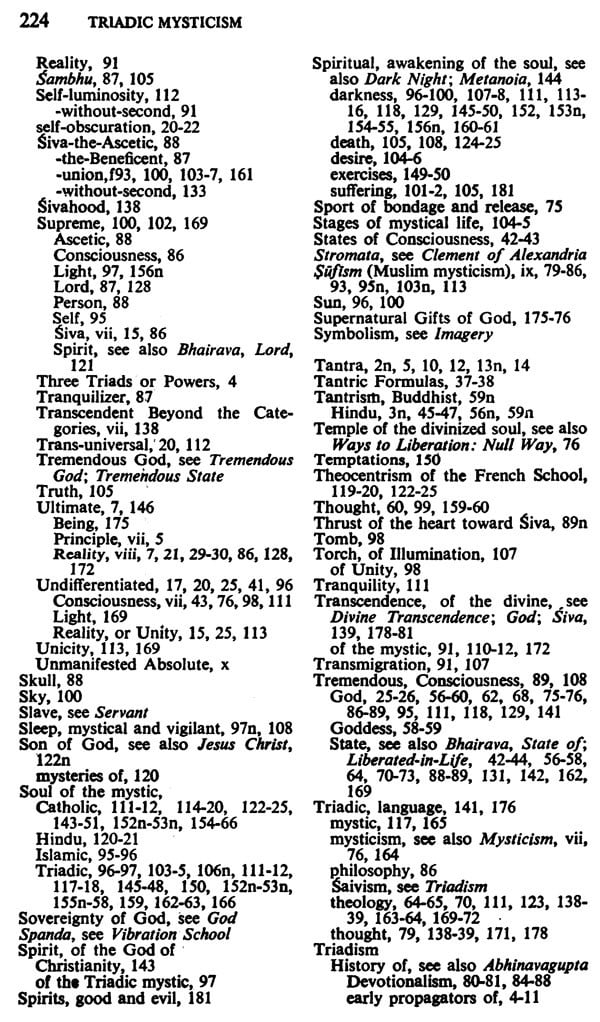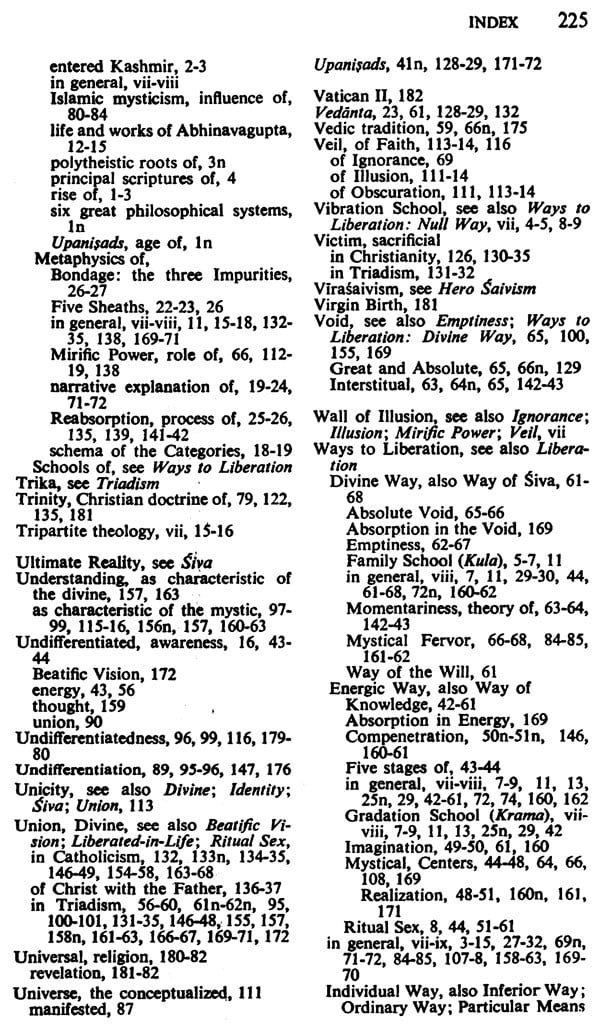
Triadic Mysticism
Book Specification
| Item Code: | IDD371 |
| Author: | Paul E. Murphy |
| Publisher: | Motilal Banarsidass Publishers Pvt. Ltd. |
| Edition: | 1999 |
| ISBN: | 9788120800106 |
| Pages: | 241 |
| Cover: | Hardcover |
| Other Details | 9.0 inch X 6.0 inch |
Book Description
From the Jacket
This book is the first consistent theological treatment of the subject of Hindu thought known to itself as Trika or Triadism, and popularly as Kashmir Saivism. Few Indic theologies equal it in architectonic power and mystical profundity. Its highest category and goal is Consciousness or Light ( cit, prakasa), whose foremost characteristic is Freedom (svatantrya). This goal can be attained through four ways (upayas). The theology of these ways pertains to Gnostic or knowledge-oriented Triadism, whose prime theologian is Abhinavagupta, the "emperor of Indic speculation. The book also discusses the other, and lesser known Devotional or emotion-oriented Triadism, whose chief exponent is the poetess Lalla.
The author has endeavoured to make the thought of this complex system intelligible to educated readers innocent of Sanskrit, through a consistent use of English equivalents of Triadic terminology, listed in the Appendix. He has also attempted to sound the depths of the Triadic system through the use of the comparative method, by instituting parallels with the theologies of two religions, Islam and Catholicism. The latter religion, Murphy believes, offers, the greatest number of such parallels with Triadism, and so is compared with it in greater detail. Murphy's book is truly a model of inter-theological comparison.
About the Author
Paul E. Murphy is an American, born and educated in New York city. After graduating from high school, he served for a brief time in the United States Marine Corps toward the end of World War II and was honourably discharged in 1946. In 1950 he entered the New York City Police Department and was retired with the rank of Lieutenant in 1974. Since then he has taught Police Science and Criminal Justice Ethics at John Jay Collage of Criminal Justice, City University of New York, where he holds the rank of Associate Professor.
The Author possesses a master of Public Administration degree (1963) from the City University of New York, and the Master of Arts (1970) and Doctor of Philosophy (1978) degrees from Fordham University. He has numerous publications in the areas of theology, Police Science, and ethics. In 1980, he was a visiting professor for six months at the Police Staff Collage, Bramshill, England during which time he lectured at Oxford University and at various police force academies throughout the United Kingdom.
Contents:
Preface
Chapter
I. HISTORY AND METAPHYSICS
A. History
1. Rise of Triadism
2. Schools and Early Propagators of Triadism
(a) Family (of Energies) School
(b) Gradation School
(c) Self-Awareness or Vibration School
(d) Integrated School
3. Life and Works of Abhinavagupta
(a) Initial or First Theological Period
(b) Intermediate or Poetic Period
(c) Final or Second Theological Period
B. Metaphysics
1. Cosmic Manifestation : The Thirty-six Categories of Triadism
2. Reabsorption : The Twelve Consuming Energies or kalis
3. Bondage: The Three Impurities or Ignorances
II. GNOSTIC TRIADISM : THE WAYS TO LIBERATION
A. The Individual Way : Absorption in the Object
1. The Spiritual Master
2. Yogic Practices
(a) Images, Postures, and Gestures
(b) Breath Control
(c) Mystical Formulas
(d) Meditation
(e) Appeasement of Thought
B. The Energic Way : Absorption in Energy
1. The Mystical Centers and the Coiled or Serpentine Potency
(a) The Seven Centers
(b) The "Awakening"
2. Mystical Realization
(a) Perfect Compenetration
3. Ritual Sex
(a) Its Rightful Place in the Energic Way
(b) The Ritual Itself
C. The Divine Way : Absorption in the Void
1. Emptiness
(a) The Concepts of the Single Moment and the Interstitial Void
(b) The Definition and Implication of the Term "Emptiness"
(c) The Absolute Void
2. Mystical Fervor
D. The Null Way : Absorption in Bliss
1. Energic Fulmination
2. The Tremendous State
3. Liberation-in-Life and Impassibility
III. DEVOTIONAL TRIADISM
A. Conflict Between Knowledge and Love
B. Devotion and the Devotional Poets of Kashmir
C. The "Personal" God of Devotionalism
D. Siva, The Archetypal Ascetic
E. The Dark Night of Siva
1. The Painful Night
2. The Painful and Purifying Phases of Progression
3. The Anguish of Possession and the Pangs of Desire
F. Illumination and the Path of Love
IV. TRIADIC AND CATHOLIC PARALLELS
A. Archetype I : Breaking through the Energy of Siva and the Return to Light
B. Archetype II : Sacrificial Self-Annihilation
1. Theocentrism : Foundation of the French School
(a) Christological Approach: Self-Renouncement and Adherence to God
2. Sacrificial Adoration
(a) Sacrifice in the Old Law
(b) Sacrifice in the New Law
C. Archetype III : The Dark Night of Mystical Awakening
1. The Meaning and Application of the Term: "Dark Night"
(a) The Active Night of Sense
(1) The Aridities
(b) The Passive Night of Spirit
(1) The Painfulness of the Contemplative Night
(2) The Divine Light of Contemplation and the Faculties of the Soul
2. The Stages of Mystical Progression
(a) The Inferior Stage
(b) The Superior Stage
D. Archetype IV : The Impassible State of Deification
1. Impassibility
2. Deification
CONCLUSION
Glossary of Triadism
List of Abbreviation
Bibliography
Index of Names
Index of Subjects
